Part 2: Ho Chi Minh City – its glorious food, Vietnamese coffee and more

Saigon was the capital of the French protectorate of Cochinchina (1862–1954) and of South Vietnam (1954–75). Besides opulent buildings, the French colonial masters have also left a distinct mark in the culinary infusion in some of Vietnam's popular dishes, enjoyed today not only in the country but the world over.

I have been to France twice and it was not only the intriguing culture or impressive museums that bowled me over but the alfresco cafes and fine patisseries as well. I was pleasantly surprised when I walked into the Annam Café Gourmet lounge, greeted with the aroma of freshly baked breads, rows of delicate cakes and exquisite-looking pastries. My friends and I enjoyed a board of antipasto cut meats with slices of crusty baguette, a salad, a salmon quiche, some sandwiches, two slices of cake and a pie. It was a boon travelling in a group as we could sample a wider selection of the delicious offerings.


On the ground floor was the Annam Gourmet Market, specialising in high-end quality food and beverage products sourced from all over the world.
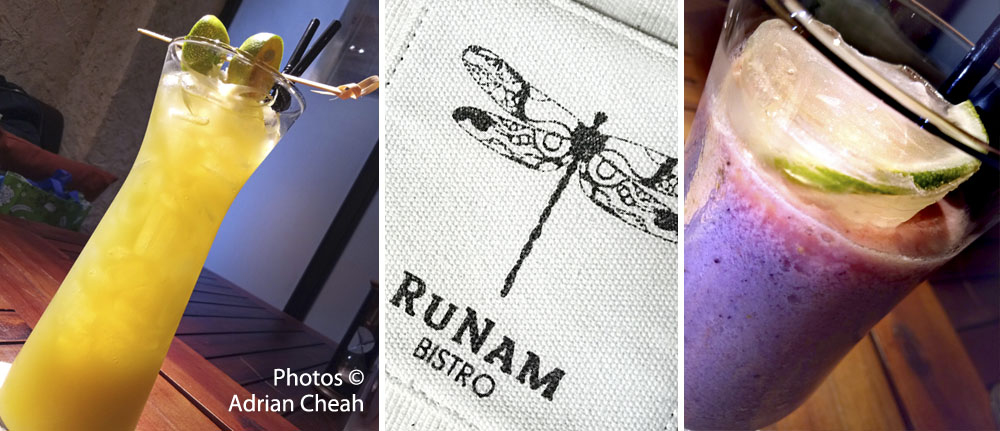

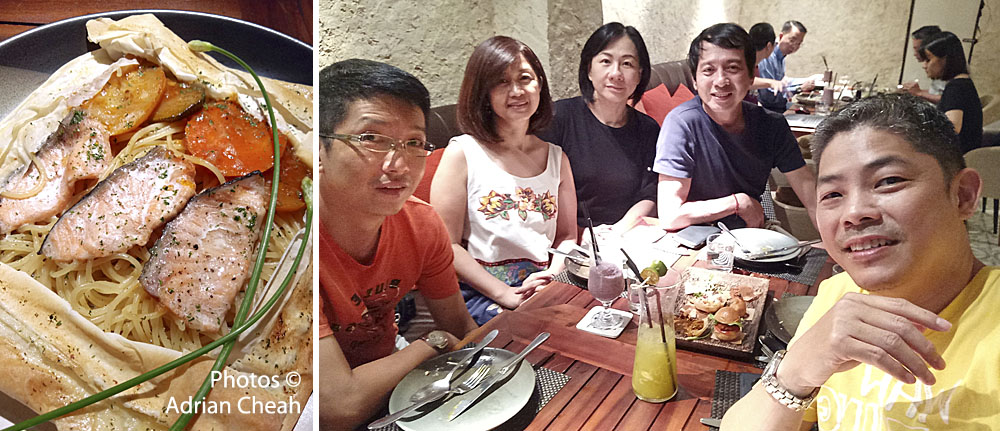
Ho Chi Minh City is alive with trendy restaurants and cafés as well as cozy bistros serving infusion concoctions and mouth-watering dishes, often with an Asian touch. Taking a step back, one can easily notice the influences of various culinary traditions that have brought about nouveau creations in Vietnam. This is evident when it comes to the French influences on the local palate. Although there are recognisable French flavours in various dishes and cakes, they should nevertheless not be compared with Parisian cuisine. They are indeed very different.
When the French first occupied Vietnam, baguettes were considered a luxury item and were not common among the masses. In the early 1950s when inexpensive rice flour was adapted for the recipe, baguettes quickly became a household item. Using rice flour, the loaves are lighter than the French version, also resulting in a thinner and crunchier crust. Filling a loaf with meats and vegetables makes it a convenient portable meal on the go, quickly becoming an instant hit among the locals. Bánh mì as it is called today is arguably one of the most recognisable Vietnamese dishes with a French accent.

French baguettes are also an essential accompaniment to many stews (e.g., ragu ga – Vietnamese chicken stew and bo kho – Vietnamese beef stew) and curries. They are also the bread of choice for many local sandwiches.


Johnson Yip, a good local friend of Jason's, took us off the beaten track to a popular local dining spot for dinner one evening. The table was laden with a variety of local favourites including stir-fried glass noodles, homemade fish ball soup with bitter gourd and a few curry dishes. Some curries used Sichuan peppercorns enabling the numbing effect that was thrilling (to me). Some found this horrifyingly uncomfortable, perspiring bucketloads. Anyhow, we enjoyed savouring the lip-smacking mutton curry, dipping chunks of baguette to soak up its less spicy gravy. It was such a satisfying feast!

Another thing that is obviously significant in Vietnam is its coffee culture. It is quite remarkable that coffee has grown into such a huge industry today although at the turn of the 20th century, it was virtually non-existent in Vietnam. Like their Chinese neighbours, the country hitherto has had a strong tea-drinking tradition.
Coffee was first introduced to Vietnam by the French and it quickly became one of its most successful exports. In fact today, Vietnam is the world’s second largest exporter of coffee (after Brazil).
The country mainly grows the coffea canephora species which produces the robusta coffee beans. Its strong chocolaty taste with a bitter finish is often balanced with some sweet, creamy condensed milk, creating a flavourful utopia (if you are a coffee lover like me). We sampled many types of coffee when we were in Vietnam. Hands down, my favourite was the cup prepared with the very slowly drip press. It encouraged us to take time out and decide on our next destination to dine or to explore.

Throughout the city, street hawkers selling cut fruits, salads and snacks are easily accessible. They toil the day balancing a pole with baskets of their ware at both ends. Although life is not a bed of roses for them, I somehow noticed a great sense of peace in the faces of these truly industrious Vietnamese. The Vietnamese nation seems to have moved on from the war quickly and resiliently. People in both the North and the South have geared up for a rapid pace of economic development.
Here is an interesting side note. According to the World Bank, "Vietnam’s development over the past 30 years has been remarkable. Economic and political reforms under Đổi Mới, launched in 1986, have spurred rapid economic growth, transforming what was then one of the world’s poorest nations into a lower middle-income country. Between 2002 and 2018, GDP per capita increased by 2.7 times, reaching over US$2,700 in 2019, and more than 45 million people were lifted out of poverty. Poverty rates declined sharply from over 70 percent to below 6 percent (US$3.2/day PPP)."


Back to more glorious food. With a steady flow of tourists and a burgeoning expatriate community, fine restaurants offering cuisine from the four corners of the world are available in the city. We had a tender pork knuckle with sauerkraut and smooth Schneider Weisse beer, fiery tom yam kung and pad thai, spaghetti carbonara, steamed lotus rice, tiramisu cheesecake and more. One of the experiences we missed was a multi-course omakase meal or a transcendent indulgence of a fine dining degustation feast.

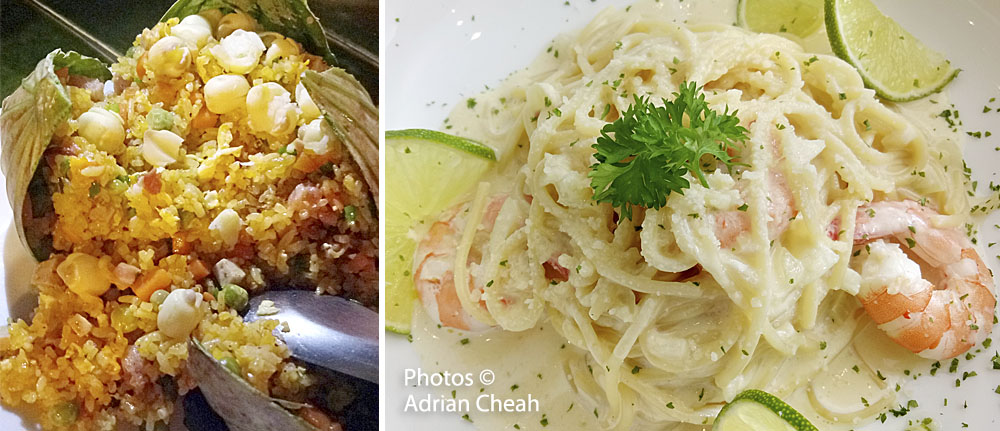

The dinner we had at Barbeque Garden was rather enjoyable. We were drawn in by the beautiful ambience and friendly staff. Tableside cooking enabled us to monitor the "doneness" of our grilled items. We enjoyed the barbeque ribs as well as the steamed rice wrapped with lotus leaf. The cool refreshing coconut water was a real thirst quencher.


To avoid disappointments at restaurants, there are some simple rules I would observe when placing my orders. If I were at a seafood restaurant, I would order seafood items, always inquiring about the catch of the day. If I were at a steakhouse, I would order a ribeye and if available, Wagyu or dry-aged steak. If I were fine dining restaurant, I would leave it up to the chef and go for the degustation set menu. Being at Barbeque Garden, we ordered some Vietnamese appetisers, a few grilled items, some greens, barbeque ribs (the star of the dinner) and a rice dish. It was a good mix of dishes with no regrets.
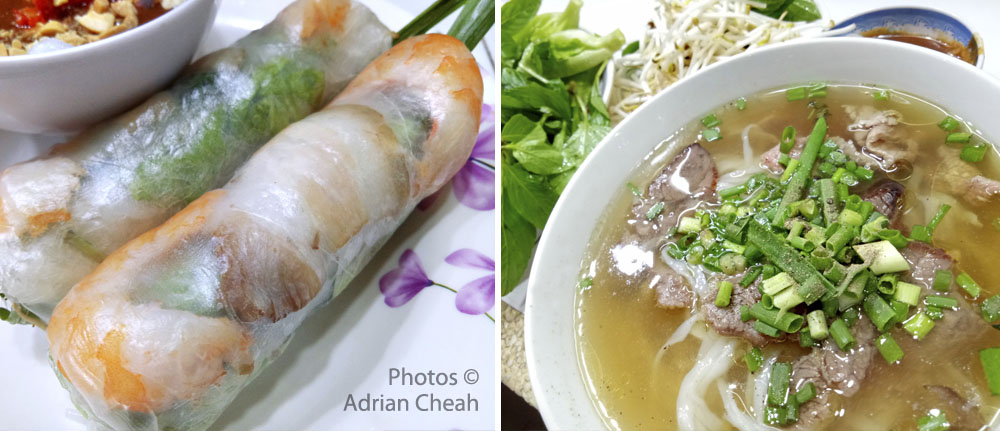

Of course being in Vietnam, we scouted for typical Vietnamese favourites. One interesting place that offered just that was the Ben Thanh market. The first thing we did was to head to the middle of the market complex. There at its core, was a large food centre with many stalls serving up mouth-watering Vietnamese delights. After our tummies were filled, we roamed the huge market that had everything under the sun, housing a whopping 1,500 stalls.

This bustling market located in the heart of the city centre was built in 1870 by the French. It was formerly called Les Halles Centrales before being renamed Ben Thanh in 1912. Being Penangites, haggling over prices came second nature to us which was handy in such locales.
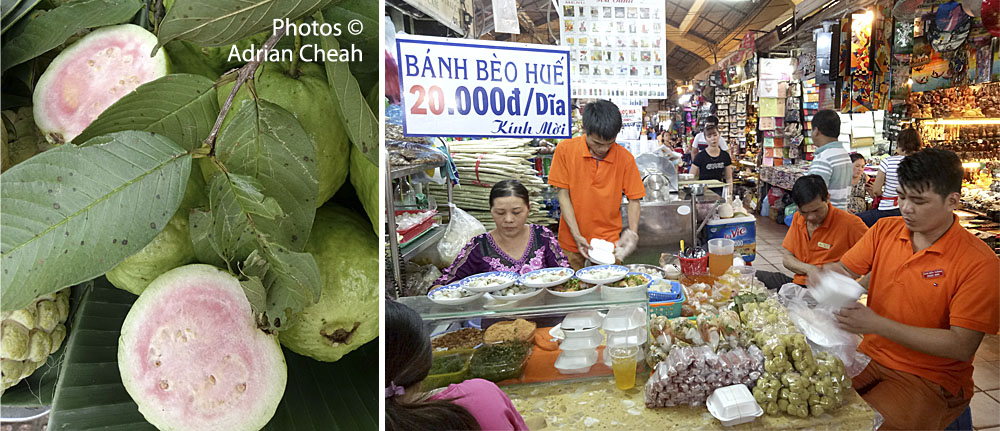
The market has four gates, facing four cardinal directions. The Southern Gate leads to stalls offering apparel and dried foods, while stalls selling fresh fruits, meat and flowers can be found around the Northern Gate. The Eastern Gate is a body/skin care heaven while the Western gate leads to stalls selling footwear and souvenirs.


When it comes to retail therapy, Ho Chi Minh City has plenty to offer – from lacquerware to handcrafted horn products and from grounded local coffee beans to designer handbags.
Among the many local products available, lacquerware is in almost everything from paintings and decorative display items to bowls and jewellery boxes. The art of lacquerware must have been mastered from neighbouring China (dating back some 10,000 years ago). Traditionally, the sap a lacquer tree is used to coat objects as it creates a hard shell that is resistant to heat and moisture. Most souvenir shops would have a good stock at hand.
We are not shopperholics, thus we devoted less time to shopping.

The city reverberated with the whirr of a million motorbikes. It is always on the move, exuberant yet charmingly exotic, bustling yet ornately beautiful, chaotic yet deeply memorable. Ho Chi Minh City is poised to be among the darlings of Southeast Asia, rooted in a visible past yet reinventing itself to modernity. It was easy for us to fall in love with it.

---------------------------------------------------------
PS: Do you know that the modern writing system of the Vietnamese language was first romanised by French Jesuit, Alexandre de Rhodes (1593–1660)? He perfected a romanised script, called quoc ngu, based the language on Latin alphabets. Its use was later enforced by the French-Indochina administration. The Vietnamese language prior to that was written with Chinese characters to represent Vietnamese words, much like old Japanese and Korean.
On the home front, Nguyễn Văn Vĩnh (1882–1936), a journalist, helped to facilitate the acceptance of quoc ngu by the Vietnamese society. In 1918, Kinh Khai Dinh declared quoc ngu to be the official writing language of the country. Chinese characters were officially abolished.
---------------------------------------------------------
Click here for Part 1: Ho Chi Minh City – its architectural gems and more
---------------------------------------------------------
Written and photographed by Adrian Cheah
© All rights reserved
8 September 2017